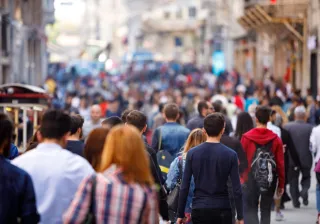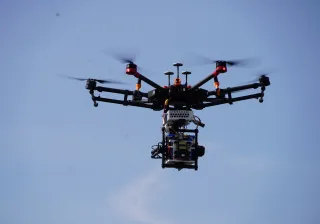The popularity of online shopping has grown at a tremendous rate in recent years. In 2020, the COVID-19 pandemic created a real home delivery boom. The logistics companies involved in the Open Mode project have been busy after a huge increase in the number of delivery orders. Our group of researchers had already taken a look at consumers' views and wishes before the pandemic. We wanted to have a better understanding of consumers' wishes regarding home delivery. How has the Covid crisis affected it?
Accurate expected delivery time makes services significantly more appealing
The study was conducted as group discussions with consumers of different ages living in Helsinki metropolitan area. The qualitative study had 21 consumer participants. Consumers are especially looking for home delivery for heavy items that are difficult to transport. People also like to have home delivery for items small enough to fit in a letterbox. When it comes to medium-sized packages, people prefer to have them delivered to a post office or parcel locker. Consumers’ age and family situation affect their attitudes towards home delivery. For example, parents with small children are happy to have their orders delivered to their door if the price for the delivery seems appropriate compared to the price of the purchased items.
One important factor is the time window of deliveries. For consumers, the accuracy and adjustability of the expected delivery time makes delivery services more appealing. People have also liked the various applications that narrow down the delivery time window on the day of delivery. Tracking the delivery can even be a fun activity for the children! On the other hand, giving a narrow time window is challenging for delivery companies and makes delivery services expensive.
New kinds of added value services with home delivery
Looking at the principles of circular economy, many companies as well as consumers are wondering whether delivery services could go the other way, too. If the delivery company could also take something away? An example could be recyclable materials or an item that has been sold at an online flea market. Consumers are interested in this kind of service, putting out the idea of having it covered by the tax credit for household expenses.
Alongside delivery services, companies could offer other small additional services that don't require special professional skills or take a lot of time. Some examples could include installation services, shovelling snow, putting away groceries or even lending out items that people only need occasionally. To enable these kinds of versatile services, companies need to be able to work together and have the courage to try out different business models.
Some consumers are prepared to pay more for delivery than others. Delivery services are based on time and effort versus ease, and how much people are willing to pay for them. Another big factor is that there is a strong ‘do it yourself’ culture that favours independence.
Covid crisis increased online shopping and deliveries
The Covid crisis has affected people's consumption habits and how they use services. During autumn 2020, VTT carried out a qualitative study examining the impact of the pandemic on different aspects of consumers’ lives. The three-month study had 27 Finnish participants of different ages. Consumers reported that, due to remote work as well as financial challenges, they had spent less money on professional clothing but found increased use for their leisure and outdoor wear. People also reported increased food costs and more investments in leisure time supplies such as books and sports equipment as well as renovation and interior decoration products. With no holiday trips and other events, people have more money to spend on everyday life.
In general, people are online shopping more than before. For some, online shopping has become a pastime, whereas others reported that they have made fewer impulse purchases. One participant said that “Home delivery is more appealing now than before.” People’s interest in having groceries and take-out food delivered has especially grown: “Take-out delivery services, and certainly also grocery delivery services, have been really useful during Covid.”
Authors:
Kaisa Vehmas, VTT
Minna Lammi, University of Helsinki
Maria Antikainen, VTT





